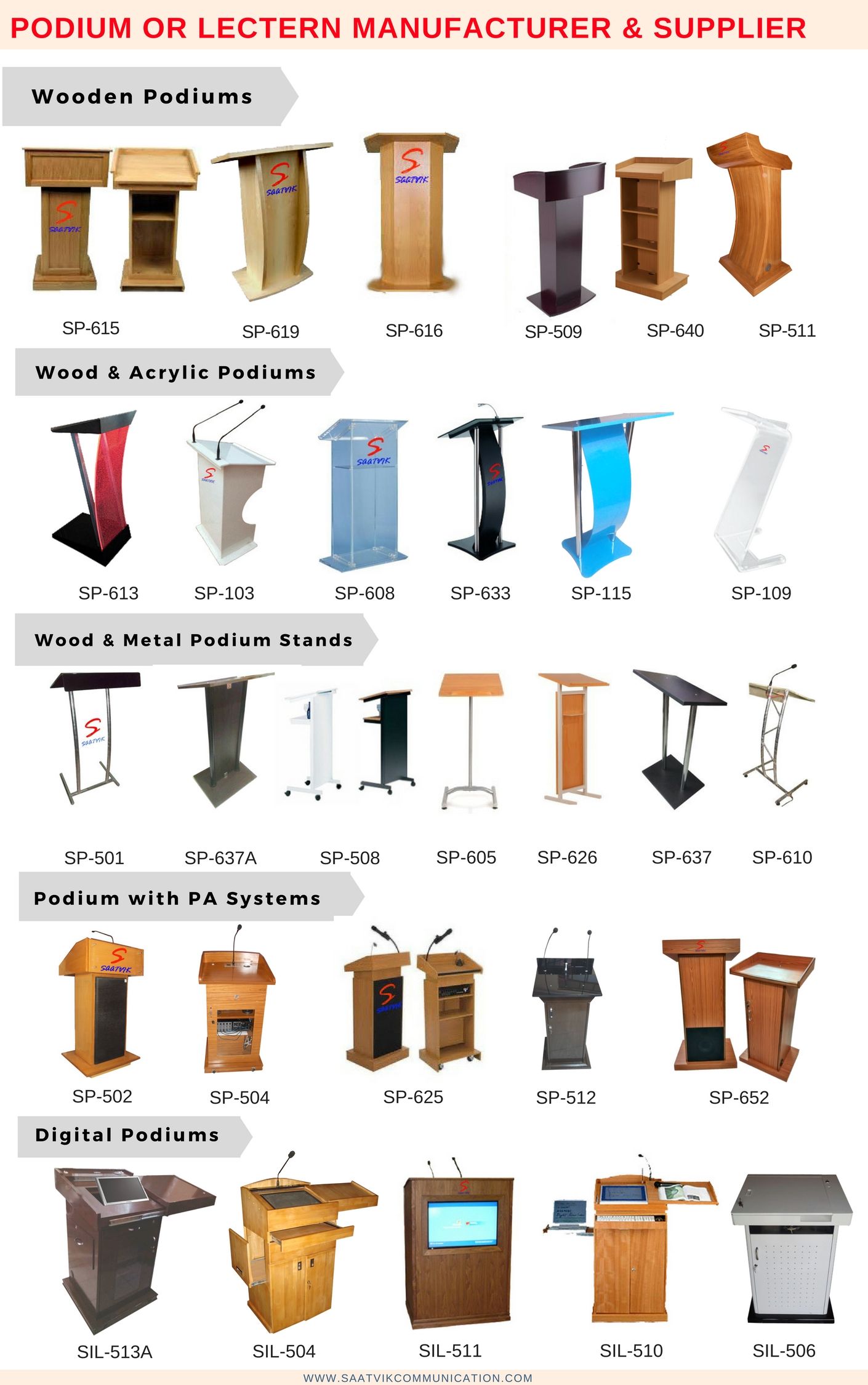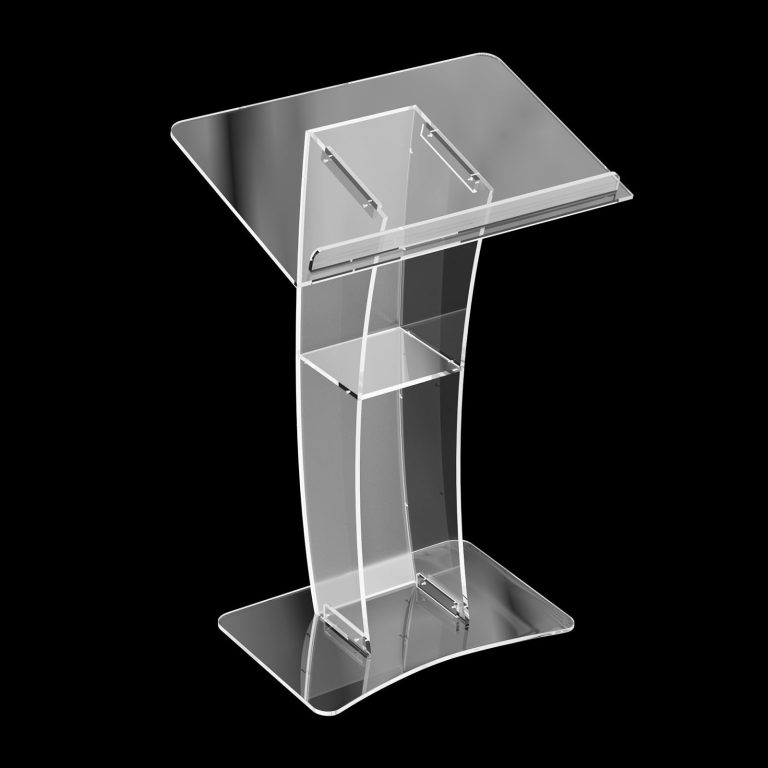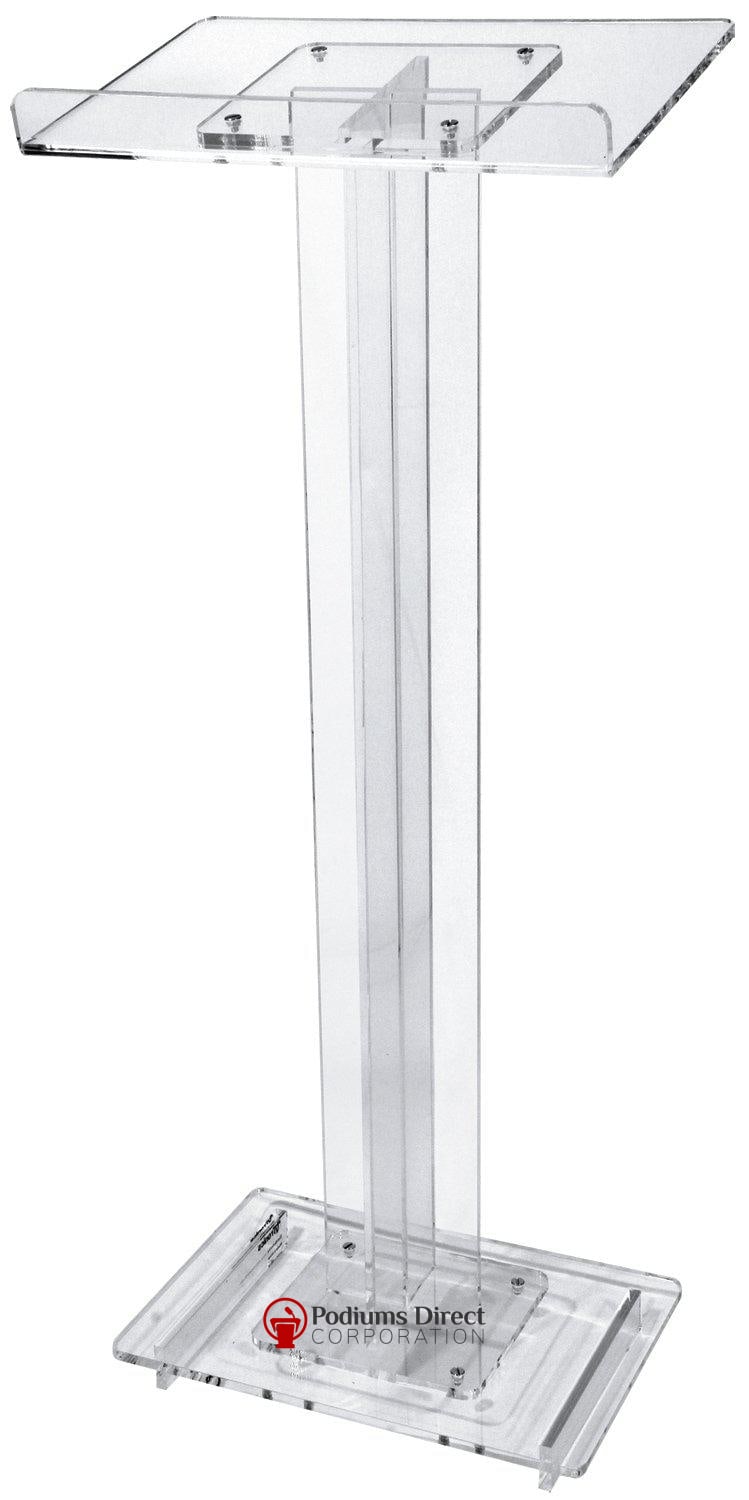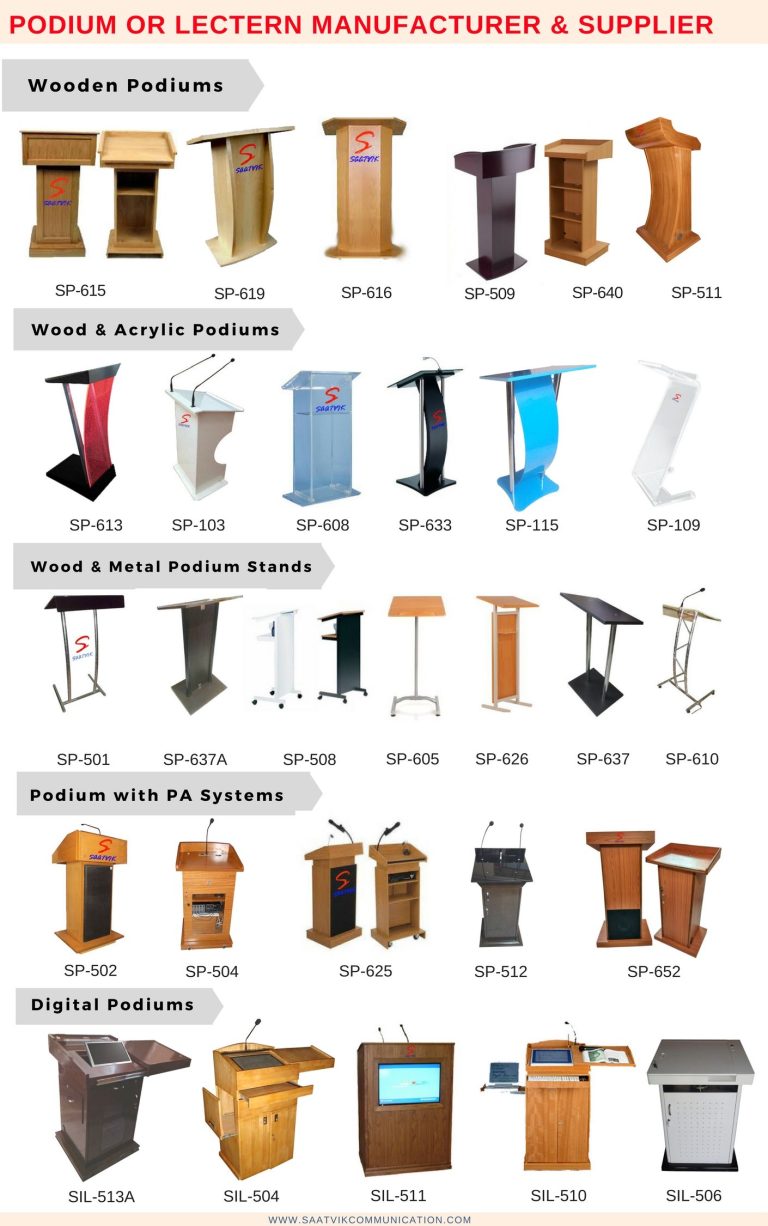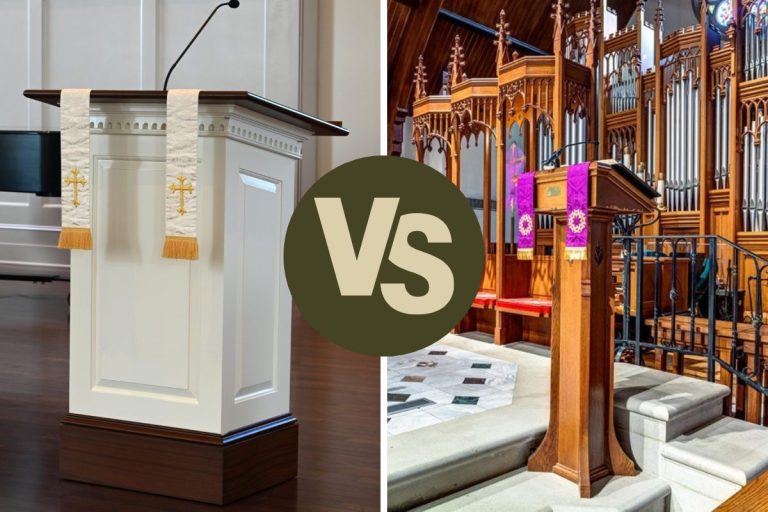Lectern Vs Podium Vs Dais: What’s the Difference?
When speaking in public, knowing the difference between a lectern, podium, and dais is crucial. Each serves a unique purpose and understanding these can enhance your presentation skills.
Public speaking involves more than just delivering a speech. The setup and tools used can impact the effectiveness of your message. Lecterns, podiums, and daises are key elements in many speaking environments, yet they are often confused. Knowing when and how to use each can make a significant difference in your presentation.
This blog will clarify the distinctions between these three, helping you choose the right one for your next event. Whether you are a seasoned speaker or new to public speaking, understanding these terms will enhance your communication and presentation skills.

Credit: www.facebook.com
Lectern Explained
When speaking in public, the right equipment can make a big difference. A lectern is one such piece of equipment. Understanding its design and usage helps you make the best choice for your needs.
Design And Usage
A lectern is a small, often slanted stand. It holds notes or a book. The speaker stands behind it. The slant allows for easy reading. Lecterns often come with a built-in light. This helps in dimly lit rooms. Some have a microphone attached. This ensures the speaker’s voice is heard clearly. Lecterns are portable and easy to set up.
Common Settings
Lecterns are common in many settings. Schools and universities use them in classrooms. They are also found in conference rooms. Churches use them for readings and sermons. Lecterns are perfect for any setting where a speaker needs to read notes. They help the speaker stay organized. This makes the speech more effective.
Podium Details
Understanding the differences between a lectern, podium, and dais can be crucial. In this section, we’ll dive into the details of a podium. We’ll explore its structure, function, and typical environments where it’s used.
Structure And Function
A podium has a specific structure and purpose. It is a raised platform. This platform is designed for a person to stand on while speaking. The height of a podium varies. But, it is usually about 6 inches to 12 inches high. It gives the speaker a slight elevation. This makes them more visible to the audience.
The primary function of a podium is to elevate a speaker. This helps the audience see and hear them better. It creates a focal point for the audience. A podium can also include a small, angled surface. This surface is for holding notes or a microphone.
Typical Environments
Podiums are common in various settings. They are often used in educational institutions. Here, teachers or speakers use them during lectures. They are also prevalent in conference halls. Speakers use them to address large audiences. Podiums are also found in places of worship. Religious leaders use them to deliver sermons.
Additionally, podiums are common in political rallies. Politicians use them to address the crowd. They are also seen in award ceremonies. Here, the host stands on the podium to present awards. In these environments, the podium serves a vital role. It helps the speaker engage with the audience effectively.
| Environment | Usage |
|---|---|
| Educational Institutions | Lectures and presentations |
| Conference Halls | Speeches and addresses |
| Places of Worship | Sermons and religious talks |
| Political Rallies | Political speeches |
| Award Ceremonies | Presenting awards |
Dais Features
The dais is a raised platform typically used for speakers or honored guests. It adds prominence and visibility to those standing on it. Understanding its features is essential for effective event planning.
Setup And Purpose
A dais is often set up at the front of a room or hall. It is usually elevated to give speakers better visibility. This elevation helps engage the audience. The dais can vary in size, accommodating one or several people. It can be simple or elaborate, depending on the event’s formality.
The primary purpose of a dais is to highlight important individuals. It is often used in ceremonies, conferences, and formal gatherings. A dais helps direct attention to the speaker or honored guests. This focus ensures that their message is effectively communicated.
Popular Applications
Daises are widely used in various settings. In schools, they are common during graduation ceremonies. They provide a stage for speeches and presentations. In corporate events, a dais is used for keynote speakers. It helps emphasize their importance and authority.
Political rallies and public meetings also use daises. They offer a platform for leaders to address large crowds. Wedding receptions and awards shows often feature a dais. It serves as a focal point for special announcements and honors.

Credit: executivespeechcoach.blogspot.com
Comparative Analysis
Understanding the differences between a lectern, podium, and dais is crucial. These terms are often used interchangeably but refer to distinct pieces of furniture. Each serves a unique purpose in public speaking and presentations. This comparative analysis will help you choose the right option for your needs.
Key Differences
Lectern: A lectern is a small stand with a slanted top. Speakers place their notes or books on it. It is usually used by a single person.
Podium: A podium is a raised platform. A speaker stands on it to be seen by the audience. It often has a lectern on top.
Dais: A dais is a larger platform. It accommodates multiple people. It is used for formal events and ceremonies.
| Feature | Lectern | Podium | Dais |
|---|---|---|---|
| Usage | Single Speaker | Single Speaker | Multiple Speakers |
| Position | On the floor | Raised Platform | Large Platform |
| Size | Small | Medium | Large |
Choosing The Right Option
When selecting between a lectern, podium, or dais, consider your event’s needs. Here are some tips to help you decide:
- For small presentations: A lectern is ideal. It is simple and practical.
- For larger audiences: Use a podium. It elevates the speaker, making them visible.
- For formal events: A dais is suitable. It can hold multiple speakers and adds a formal touch.
Think about the size of your audience and the nature of your event. This will guide you to the best choice.

Credit: eloquentdisplays.com
Frequently Asked Questions
What Is The Difference Between A Lectern And A Podium?
A lectern is a stand for notes. A podium is a raised platform.
When Should You Use A Dais?
Use a dais for formal events. It seats speakers or guests.
Can A Podium Be Used As A Lectern?
Yes, you can place a lectern on a podium. They’re often used together.
Conclusion
Choosing between a lectern, podium, or dais depends on your needs. Each serves a unique purpose. A lectern suits speakers and presentations. A podium elevates the speaker, making them more visible. A dais provides a platform for multiple speakers or guests.
Understanding these differences helps you pick the right one. Your choice can improve your event’s effectiveness and audience engagement. Always consider the context and setting of your event. This ensures you make the best decision. Thanks for reading!
